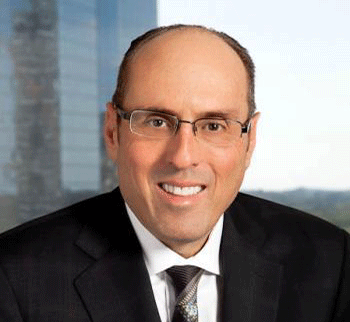Sam Marr found a hero – an anonymous donor who came forward to give him part of her or his liver.
“There was a time where my future didn’t look so good,” said the 51-year-old father of two. “Now it looks very good.”
After most of a year on the transplant waiting list, in early November, he got the call that someone was a match, and he would go through a living-person liver transplant on Nov. 21.
Although he can’t be sure how this donor found him, he said it was likely they heard his story from his wife, Susan, who wrote an email to friends and family pleading them to check if their liver would be a match for Marr. The letter was forwarded on to a number of people, including The CJN.
A living-person liver transplant involves a surgery that can take up to 10 hours in which a living person donates a portion of their liver. Often, several months after the transplant, the liver will regenerate to its original size. The portion inside the recipient also regenerates, though not quite to its original functioning capacity.
The biggest challenge for the transplant recipient is that the body could reject the foreign organ, Marr explained. He has to take medication to suppress his body’s desire to fight the organ, which makes him susceptible to other illnesses. However, over time, the amount he needs is reduced.
Already, just three months after the surgery, Marr said he feels much stronger and he hopes to return to his work as a lawyer next month.
He said he wants people to know that he’s on the road the recovery.
He especially wants to give his thanks to the people who supported him, whether they passed on his story online, in person or in synagogue – he said he’s heard that he was the subject of many sermons during the High Holidays – as well as to the people who treated him in Toronto General Hospital.
His experience has inspired him to get involved in organ donation awareness.
“There’s not enough organ donation in our country,” he said, explaining that Canada has some of the lowest donor rates in the world. In particular, he added, people need to know about live donations. “I think more people would do it if they knew about it.”
He also hopes to call on the government to give a reward to the family of deceased organ donors. When you give a charitable donation, you get a tax receipt, he pointed out.
“One of the greatest donations a person could give when they’re dead is to give their organs away,” he said. “The estate and family should benefit from their generosity. I think it’s the right thing to do.”
Marr said he would remind anybody waiting for a transplant to have faith in the medical system. The surgery is difficult, but the doctors are tremendous. Additionally, he recommends finding a way to share their story to encourage people to be tested as a match.
People who are waiting for a match “have to figure out a way to try to spread the word,” he said after a number of people came forward to be tested following his publicity campaign. “There’s nothing special about me – I think other people would [then] have the same opportunities.”
